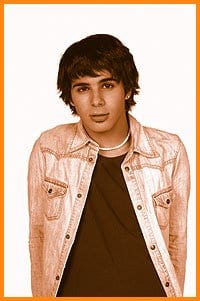Degrassi: The Next Generation is about to go where no prime-time youth-oriented show has gone before. Marco, the first openly gay character on the series, will be coming to terms with his sexuality, and we will see his first love unfold on screen just like any other high-school relationship.
Other shows like Buffy the Vampire Slayer and Dawson’s Creek have featured non-straight characters for youth audiences, but according to Aaron Martin, head writer for the Degrassi series, Marco is different.
“Marco is not just the gay character. Marco is explored in terms of being a smart kid who is slowly coming to terms with and embracing the fact that he’s gay.”
The true-to-life drama unfolds in early September when The Next Generation kicks off its third season. Tenth grader Marco is the victim of gay bashing. Once issues of isolation, discrimination and violence are examined, Marco will be free to finally explore his homosexuality.
Discovering sexuality and forming key relationships is as much a part of teenage life for non-straight kids as it is for heterosexual youth, Martin says. “It’s part of Degrassi’s mandate to explore everything. If it goes on in teen life, we’ll put it on screen.”
Marco is artsy; he likes fashion and hanging out with the girls. He’s quiet and he doesn’t like being involved in trouble. Among his peers at the fictional Degrassi Community School, Marco tends to be the confidant and the voice of reason.
Some suggest that this makes Marco too stereotypical, but Martin and Adamo Ruggiero, the teenage actor who plays Marco, disagree. Ruggiero says he draws his influence from the real-life teenage drama played out among his peers at the arts high school he attends in Toronto, some of whom are now in the process of coming out.
“I see them go through it and what I see happening right now is pretty close to what I’m seeing in my school in real life,” Ruggiero says. “Staying true to the writing is already my way of being responsible about it and respectful about the content because it is written in a respectful manner. The writers are actually getting into teens’ heads, and if they’re writing what teenagers are thinking I think they’re doing their job just right.”
“My argument is, what’s wrong with showing a gay character like Marco?” says Martin. “It’s okay to like fashion. It’s okay to do so-called gay things and to embrace them when you are a teenager. Hopefully, for the non-jock gay kids that are out there Marco will be a role model.
“So far we haven’t heard any flak on it,” says Martin. “But I think that this year we might have more chance of having some concerns from conservative viewers, especially among our American audience, because he’s actually going to have a boyfriend by the end of this season.”
Bringing an openly homosexual character into the Degrassi fold is long overdue. The concept of incorporating a gay student originated long before the original incarnation of Degrassi aired in the 1980s. Co-creator and producer Linda Schuyler attributes the decision to a haunting event that occurred during her career as a teacher. A colleague’s son committed suicide because he didn’t know how to face the issue of coming out in high school. His suicide remained a shadow in Schuyler’s mind throughout production of the various Degrassi shows. She says Degrassi: The Next Generation is the perfect opportunity to bring the issue out.
“Linda told me her story, so I knew that the character was going to go in this direction when I joined the cast in the second season,” Ruggiero says. “I didn’t think that it was going to develop as much as it is in the season coming up right now, but I’m comfortable with it. At the end of the day, that’s my job and whatever it takes to do it properly, that’s what I’m going to do.
“Naturally,” Ruggiero says, “once Marco has gone through the bad, of course he’s going to start to go out there to experience, experiment and try to put some order to his feelings.”

 Why you can trust Xtra
Why you can trust Xtra


